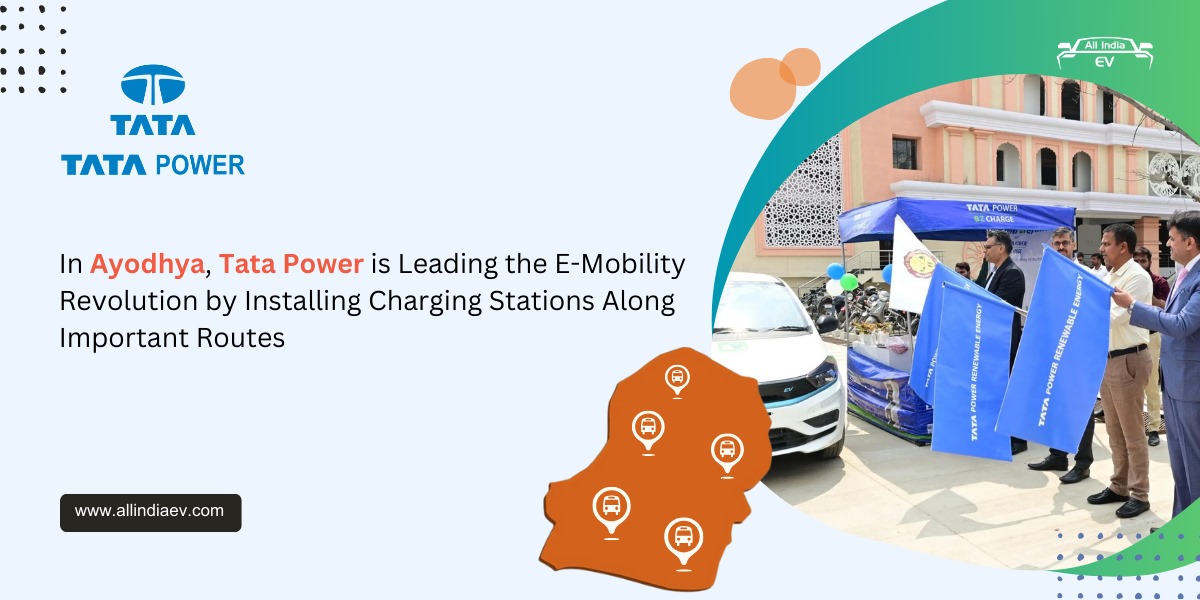
Top EV Battery Shares in India 2024
Part 2: EV Battery Chemical Manufacturers
Note: we are not changing any information and all the information is copied from Equitymaster
The EV revolution is sparking a paradigm shift within the chemical industry.
EV chemical players are actively developing and manufacturing critical components like cathode materials, electrolytes, and separators.
This targeted approach allows them to optimize performance and efficiency, crucial factors for success in the EV battery space.
1 Neogen Chemicals
Neogen Chemicals has solidified its position as a leading manufacturer of bromine and lithium-based speciality chemicals.
Over the past three decades, the company has been the primary importer of lithium carbonate and lithium hydroxide, fostering strong relationships with top lithium miners and processors globally.
While Neogen doesn’t directly produce EV batteries, it serves as a key supplier of raw materials, including electrolyte and lithium electrolyte salts.
Neogen Chemicals Financial Snapshot (2019-23)
| 2018-2019 | 2019-2020 | 2020-2021 | 2021-2022 | 2022-2023 | |
| Revenue Growth(%) | 48.05% | 27.82% | 9.90% | 45.10% | 41.43% |
| Operating Profit Margin (%) | 17.19% | 16.73% | 16.9% | 17.99% | 1692% |
| Net Profit Margin (%) | 8.20% | 8.24% | 7.82% | 9.16% | 7.28% |
| Return on Capital Employed (%) | 25.52% | 21.93% | 16.75% | 14.33% | 13.25% |
| Return on Equity (%) | 34.73% | 18.47% | 18.47% | 14.34% | 10.84% |
The business has performed admirably. Between 2018 2023, the sales and net profit have reported a 5-year CAGR of 33.6% and 35.3%, respectively.
The RoCE and RoE have been strong, averaging at over 18.4% and 20.7%, respectively, over the same period.
In a strategic move, Neogen is expanding its operations with plans to increase electrolyte production capacity to 30,000 KTPA from the previous 10,000 KTPA. Additionally, it aims to ramp up lithium salt capacity units from 1,000 TPA to 4,000 TPA.
The company foresees securing orders from three to four battery manufacturers in 2024, with capacities ranging from 0.5 GW to 1 GW, anticipating substantial demand.
To know more about the company, check out its financial factsheet and latest financial results.
2 Uno Minda
Uno Minda, a leading Indian automotive technology company, has been a key player in the traditional vehicle (4Ws, 2Ws and PV) space for over six decades.
The company is renowned for its expertise in various automotive components, including switching systems, lighting systems, acoustics systems, seating systems, and alloy wheels.
The company, recognizing the burgeoning EV market, has made a strategic move to become a significant player in the EV battery ecosystem.
The company supplies seating products and other products to EV OEMs.
Additionally, it is actively developing and manufacturing critical EV components like battery management systems (BMS) and canisters.
BMS plays a crucial role in optimizing battery performance, safety, and lifespan, making it a vital component in any EV.
Canisters provides a secure and reliable housing solution for battery packs.
Uno Minda Financial Snapshot (2019-23)
| 2018-2019 | 2019-2020 | 2020-2021 | 2021-2022 | 2022-2023 | |
| Revenue Growth(%) | 31.78% | 5.52% | 2.53% | 30.45% | 34.74% |
| Operating Profit Margin(%) | 12.73% | 11.45% | 12.11% | 11.37% | 11.46% |
| Net Profit Margin (%) | 5.43% | 2.81% | 3.52% | 4.95% | 6.21% |
| Return on Capital Employed (%) | 21.62% | 11.55% | 12.52% | 16.44% | 19.88% |
| Return on Equity (%) | 20.74% | 9.82% | 10.90% | 14.57% | 18.55% |
Between 2018-2023, the sales and net profit have grown at a CAGR of 20.2% and 17.8%, respectively.
The RoCE and RE have averaged at 16.4% and 14.9%, respectively. Looking ahead, Uno Minda is setting up a greenfield plant at Farrukhnagar Haryana, to cater to the anticipated demand for EV components.
To know more about the company, check out its financial factsheet and latest financial results.
3 Tata Chemical
Tata Chemicals, a longstanding name in India’s chemical sector, is undergoing a metamorphosis.
The company’s dominance in traditional chemicals like soda ash and fertilizers is undisputed.
Soda ash is used to manufacture lithium carbonate, a key active material used in the manufacturing of EV batteries.
The company expects the share of newer sustainable application segments of Soda Ash (EV battery, solar power etc) to increase from about 11% in 2022 to over20% by 2030.
Apart from this, the company is actively investing in building a robust EV battery ecosystem and establishing a dedicated Battery Pack Engineering Centre.
But its ambitions extend further, with plans for manufacturing plants encompassing active materials, cells and complete battery packs.
Tata Chemicals has launched a pilot project for lithium-ion battery recycling, promoting a circular economy and ensuring a steady supply of raw materials.
Moreover, the company has collaborated with ISRO, to leverage ISRO’s expertise in space-grade lithium-ion cell technology.
Tata Chemical Financial Snapshot (2019-23)
| | 2018-2019 | 2019-2020 | 2020-2021 | 2021-2022 | 2022-2023 |
| Revenue Growth(%) | 2.98% | -0.89% | -2.19% | 23.45% | 32.02% |
| Operating Profit Margin(%) | 20.97% | 20.37% | 15.73% | 1917% | 22.85% |
| Net Profit Margin (%) | 11.05% | 9.27% | 3.95% | 10.48% | 13.87% |
| Return on Capital Employed (%) | 1013% | 8.18% | 4.84% | 8.57% | 12.37% |
| Return on Equity (%) | 9.92% | 8.15% | 3.21% | 8.60% | 12.91% |
Between 2018-2023, the company’s primary business registered a sales and net profit CAGR of 10.2% and 9.4%, respectively.
The RoCE and RoE have been improving at 12.4% and 12.9% in the financial year 2023.
To know more about the company, check out its financial factsheet and latest financial results.
4 Gujarat Fluorochemicals
Gujarat Fluorochemicals, among the top five global players in the fluoropolymer market, is renowned for its fluoropolymers.
These unique polymers are capable of enduring harsh acids, solvents and bases, while providing excellent electrical insulation essential for high-voltage applications.
Originally utilized in refrigeration, non-stick cookware and chemicals, fluoropolymers are highly sought-after across diverse sectors, including semiconductors, Li-ion batteries, 5G data, automotive components, aircraft, and the emerging green hydrogen sector.
The company has already made inroads into the EV battery business through its subsidiary, GCFL.
GCFL’s EV products offer a diverse portfolio catering to the EV/ESS ecosystem.
Current offerings include electrolyte salts, additives, cathode active materials, and specialized solutions for sodium-ion batteries.
This product range addresses a significant portion, around 40%, of the cost of an LFP battery, a popular EV battery type.
Gujarat Fluorochemicals Financial Snapshot (2019-23)
| | 2019-2020 | 2020-2021 | 2021-2022 | 2022-2023 |
| Revenue Growth(%) | | -0.26% | 46.73% | 45.94% |
| Operating Profit Margin(%) | 24.97% | 30.17% | 33.65% | 38.20% |
| Net Profit Margin (%) | 7.57% | -9.01% | 20.25% | 24.07% |
| Return on Capital Employed (%) | 15.82% | 11.18% | 20.59% | 30.38% |
| Return on Equity (%) | 10.29% | -6.38% | 20.15% | 27.82% |
The parent company has performed well, with sales and net profit growing at a CAGR of 28.8% and 92.5% respectively, between 2020-2023.
Looking ahead, GFCL has planned an investment of Rs 60 bn over the next 4-5 years to significantly increase its production capacity of EV battery materials.
To know more about the company, check out its financial factsheet and latest financial results.
5 Tatva Chintan Pharma
Next on the list is Tatva Chintan Pharma.
The company operates in a niche space of speciality chemicals and is a globally recognised speciality chemical player with several market-leading products.
It’s the largest and only commercial manufacturer of structure-directing agents for zeolites in India (second globally).
Its core strength lies in a diverse portfolio of over 150 speciality chemicals, catering to industries like pharmaceuticals, agrochemicals, and sustainable paints and coatings.
Tatva Chintan Pharma Revenue Mix (2023-24)

The company’s expertise in electrolyte salts positions it well to play a vital role in this clean transportation revolution. This is required during the start and while accelerating a vehicle.
Presently, the company’s electrolyte salt segment has seen a decline in revenue due to the completion of debottlenecking activities at a customer’s plant.
However, over the next two years, the company is expecting significant growth in revenue and margins on account of launching new products and a subsequent increase in volumes.
Tatva Chintan Pharma Financial Snapshot (2019-23)
| | 2018-2019 | 2019-2020 | 2020-2021 | 2021-2022 | 2022-2023 |
| Revenue Growth(%) | 47.46% | 27.96% | 15.47% | 44.87% | -3.01% |
| Operating Profit Margin(%) | 16.78% | 21.52% | 23.90% | 27.09% | 15.70% |
| Net Profit Margin (%) | 9.96% | 14.360% | 17.38% | 22.10% | 10.73% |
| Return on Capital Employed (%) | 22.78% | 28.40% | 28.04% | 25.75% | 8.35% |
| Return on Equity (%) | 28.95% | 38.29% | 36.85% | 30.01% | 9.21% |
Source: Ace Equity
Between 2018-2023, the sales and net profit have grown at a CAGR of 25% and 28.4%, respectively. The RoCE and RoE have averaged at 22.6% and 28.6%, respectively.
To know more about the company, check out its financial factsheet and latest financial results.
Gravita India
Last on our list is Gravita India.
Gravita boasts the largest battery recycling company in India, with facilities in India and abroad.
It works with the top players in the industry, such as Amara Raja, Exide, Tata Batteries, Panasonic, HBL Power Systems, etc.
Its deep-rooted global procurement network allows it to procure material cheaper and along with an established and diversified client base, offers entry barriers.
89% of the revenues come from lead-based products, with the rest from aluminium, plastic and turnkey projects.
The value-added products account for more than 44% (financial year 2024).
The company’s capacity is to grow by 67% by FY27 with a planned capex of around Rs 6 billion, mainly financed from internal accruals.
Half of this would be for existing verticals and the rest for new verticals such as lithium, steel and paper recycling.
The company is increasingly focusing on the EV battery recycling business to become a prominent supplier in the EV battery value chain.
Gravita India Financial Snapshot (2019-23)
| | 2018-2019 | 2019-2020 | 2020-2021 | 2021-2022 | 2022-2023 |
| Revenue Growth(%) | 22.39% | 8.15% | 5.05% | 56.94% | 30.13% |
| Operating Profit Margin(%) | 5.42% | 7.53% | 8.65% | 10.04% | 10.51% |
| Net Profit Margin (%) | 1.56% | 2.271% | 4.02% | 6.68% | 7.27% |
| Return on Capital Employed (%) | 12.79% | 16.54% | 19.92% | 31.19% | 31.76% |
| Return on Equity (%) | 10.01% | 17.27% | 23.00% | 45.27% | 41.83% |
Between 2018-2023, the sales have expanded at a CAGR of 22.2%, and the net profits have grown at 33.8%.
The average return on equity (RoE) and return on capital employed (RoCE) stand at 27.4% and 22.9%, respectively.
However, it could be the opportunity for almost vertical growth for early entrants. Gravita is working on a pilot project for Lithium-ion batteries to become market-ready.
With a vast sourcing network and existing client relationships with prominent players in the battery segment, the company has an edge.




